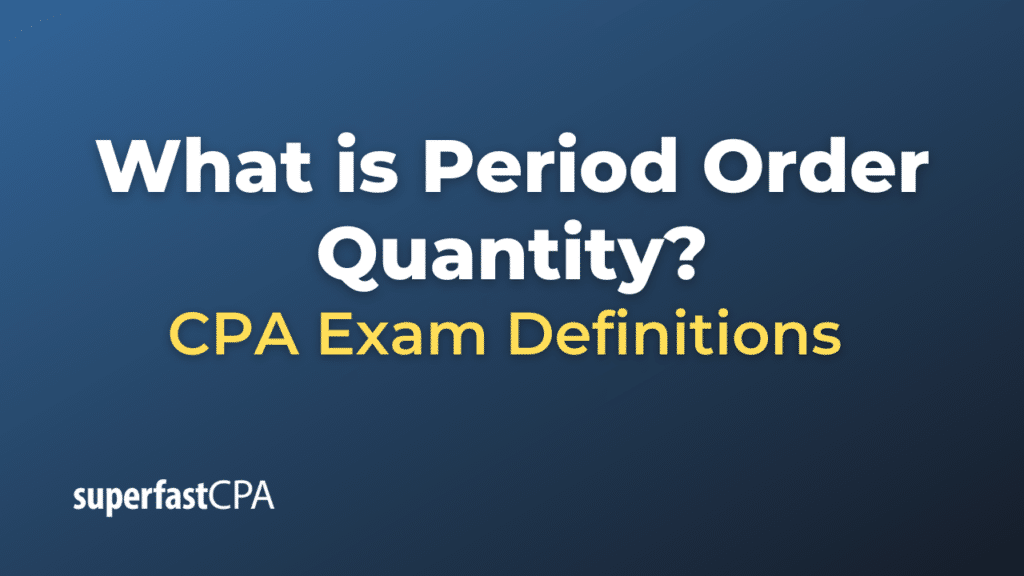Period Order Quantity
Period Order Quantity (POQ) is an inventory management technique where orders are placed for a quantity that will last for a predetermined period. The idea is to order a large quantity of inventory at once and then not order again until that inventory is expected to run out. It is often used when there are quantity discounts, or if there are high ordering costs relative to holding costs.
The order quantity varies from order to order, unlike the Economic Order Quantity (EOQ) model, which maintains a consistent order quantity. The objective of POQ is to reduce total inventory costs (ordering and carrying costs) by determining the optimal order size and frequency of orders.
POQ balances the need to maintain inventory levels to meet customer demand against the costs associated with ordering and holding inventory. It can also help to improve cash flow management by aligning inventory orders with expected sales periods.
The POQ is calculated using the formula:
POQ = √(2DS/H)
where:
- D is the annual demand,
- S is the ordering cost per order, and
- H is the annual holding cost per unit.
This formula is the same as the EOQ formula, but unlike EOQ, it is applied at specific, regular intervals (the period), and the order quantity may vary from one period to the next based on anticipated demand.
Example of Period Order Quantity
Assume a retail store sells a specific brand of shoes, with an annual demand of 1,200 pairs. The cost of placing an order (including shipping, handling, and administrative costs) is $50 per order, and the annual holding cost per pair of shoes (storage, insurance, potential spoilage, etc.) is $3.
The Period Order Quantity (POQ) would be calculated using the formula:
POQ = √(2DS/H)
So,
POQ = √[(21,200$50)/$3]
POQ = √[(120,000)/3]
POQ = √[40,000]
POQ = 200 pairs
So, the store should order 200 pairs of shoes at a time to minimize total inventory costs (ordering and holding costs).
If the store wants to keep inventory for three months at a time, it would divide the annual demand by the number of periods in a year. In this case, there are four 3-month periods in a year. So, the store would order 1,200/4 = 300 pairs of shoes every three months. The order quantity is larger because the store is ordering less frequently.
This calculation is a simplified example. In reality, a company would need to consider other factors such as seasonal demand fluctuations, lead times, safety stock, and the risk of stockouts.
Remember that the goal of the POQ model is to minimize total inventory costs while meeting customer demand. The optimal order quantity may vary from one period to the next based on changes in these factors.














